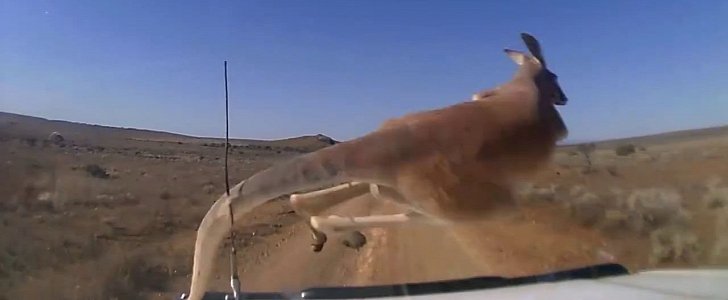Imagine this scenario: we're a few years into the future, and almost every carmaker out there has its own autonomous driving system ready. The legislators give the green light, and we get to see them in action on the road for the first time.
Naturally, they've gone through every possible test that anyone can conceive. They've been tested in the rain, in the snow, in the city, in the desert, in the woods, at night, against cyclists, against kids running into the street, and against wild animals. OK, but have they tested them in Australia?
Well, no, why should they? What is there in Australia that can't be found anywhere else? Well, how about the mysterious kangaroos, the marsupials that are exclusive to the continent (they have some in South Africa, but much smaller) and are known for their habit of jumping in front of moving vehicles.
Sweden has a similar problem with the moose, which is why a lot of the cars there are padded with extra lights to spot the beasts at night before they make their move. In Australia, road trains look like Mad Max vehicles from the front, with grates covering their windows and bullbars protecting the radiator. But that wouldn't work on passenger cars, will it?
It seems that, for the time being, it could be the only solution for Volvo's driverless cars, since the AI appears to struggle dealing with the nasty hoppers. Since the sensors use the ground for reference, the constant bouncing around of the kangaroos throws its prediction algorithms off, making it impossible for the system to know where the animal is going to land next.
"We've noticed with the kangaroo being in mid-flight ... when it's in the air it actually looks like it's further away, then it lands and it looks closer," explained David Picket, Volvo Australia's technical manager, quoted by The Canberra Times. "If you look at a 'roo sitting at the side of a road, standing at the side of a road, in motion, all these shapes are actually different."
Volvo's autonomous software won't be needed for a while, but the Swedish company already offers the Large Animal Detection system on its newest models. The kangaroo isn't yet on the list of its detection capabilities, but with 80 percent of animal collisions in Australia involving this particular creature, Volvo has enough reasons to hasten a solution to this issue.
Well, no, why should they? What is there in Australia that can't be found anywhere else? Well, how about the mysterious kangaroos, the marsupials that are exclusive to the continent (they have some in South Africa, but much smaller) and are known for their habit of jumping in front of moving vehicles.
Sweden has a similar problem with the moose, which is why a lot of the cars there are padded with extra lights to spot the beasts at night before they make their move. In Australia, road trains look like Mad Max vehicles from the front, with grates covering their windows and bullbars protecting the radiator. But that wouldn't work on passenger cars, will it?
It seems that, for the time being, it could be the only solution for Volvo's driverless cars, since the AI appears to struggle dealing with the nasty hoppers. Since the sensors use the ground for reference, the constant bouncing around of the kangaroos throws its prediction algorithms off, making it impossible for the system to know where the animal is going to land next.
"We've noticed with the kangaroo being in mid-flight ... when it's in the air it actually looks like it's further away, then it lands and it looks closer," explained David Picket, Volvo Australia's technical manager, quoted by The Canberra Times. "If you look at a 'roo sitting at the side of a road, standing at the side of a road, in motion, all these shapes are actually different."
Volvo's autonomous software won't be needed for a while, but the Swedish company already offers the Large Animal Detection system on its newest models. The kangaroo isn't yet on the list of its detection capabilities, but with 80 percent of animal collisions in Australia involving this particular creature, Volvo has enough reasons to hasten a solution to this issue.

